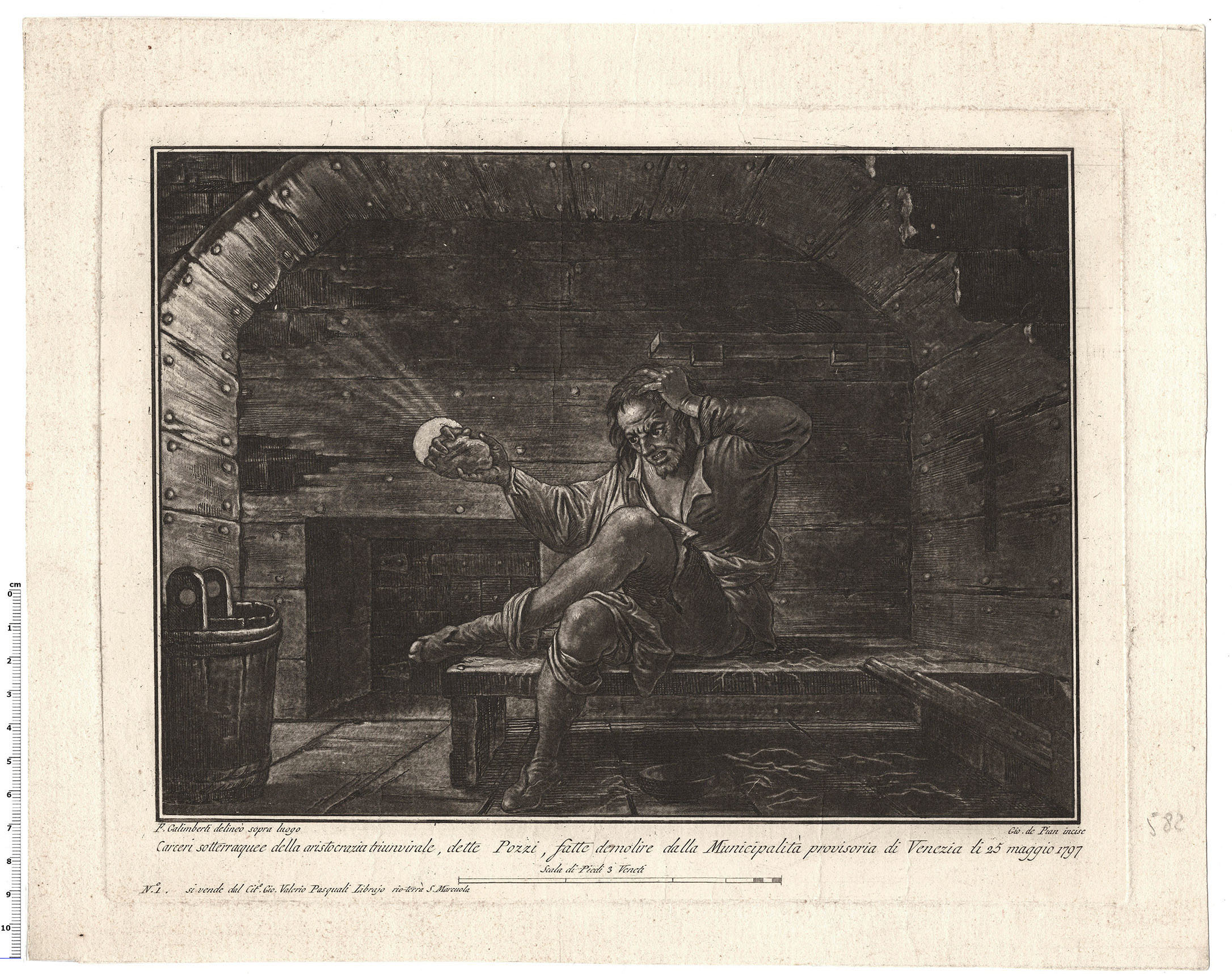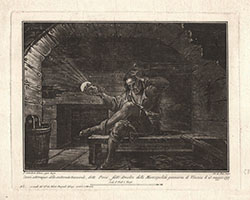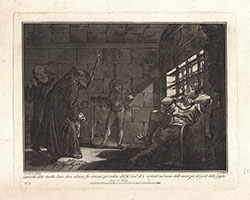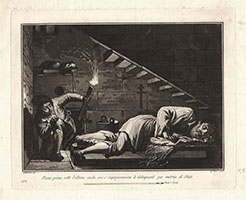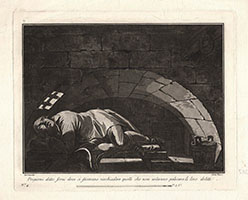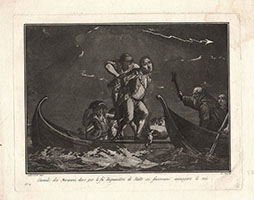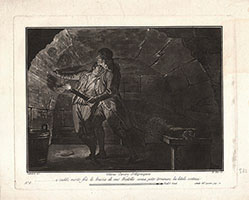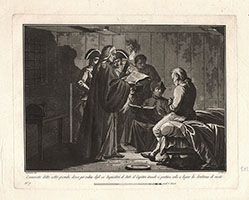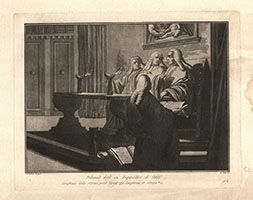(Venice 1755 - Vienna c.1803)
CARCERI SOTTERACQUEE DELLA ARISTOCRAZIA TRIUMVIRALE, DETTE POZZI... (the full series of 8), 1797
Etching and aquatint, fine, even impressions on paper with various Venetian watermarks. In very good condition, with margins.
N°1 238 x 305 mm sheet 282 x 350
N°2 236 x 300 mm sheet 282 x 350
N°3 244 x 305 mm sheet 281 x 350
N°4 247 x 303 mm sheet 285 x 352
N°5 236 x 303 mm sheet 281 x 350
N°6 241 x 306 mm sheet 282 x 350
N°7 238 x 301 mm sheet 280 x 348
N°8 240 x 305 mm sheet 283 x 353
The series was engraved after Galimberti drawings by Giovanni Maria de Pian, who used the recently discovered aquatint technique, in a highly dramatic way. The eight plates are an indictment against the cruel prison regime of the past Venetian government overthrown by the French and were also circulated with the gazette L'Equatore, directed by Vittorio Barzoni, which began publishing on May 16, 1797, the day of the entry of French troops into Venice.
Another example of the entire series is preserved in Venice at the Museo Correr; see, Venezia nell’Età di Canova, catalogue of the exhibition, Venice 1978; cat. no.214 (entry by Giuseppe Pavanello)
A painter, creator of drawings for engravings, and an engraver himself, the activity of Galimberti is linked, starting from 1778, with that of Giovanni Maria de Pian, an engraver from Belluno. In 1785 the two artists worked together to create the nine engraved plates reproducing the pictorial cycle of Carpaccio for the Scuola di S. Orsola. Thei also took part in the publishing of the Fasti Veneziani, published in Venice in 1796-97.
In May 1797 both Galimberti and De Pian joined the cause of the democratic government that governed the city until October, when, with the Treaty of Campoformio, the independence of the Republic ended. During these months Galimberti and De Pian collaborated in the realization of a series of aquatints, depicting the Piombi and the Pozzi of Venice. An indictment against the cruel prison regime of the past Venetian government, this series uses the aquatint technique in a highly dramatic way. After the Treaty of Campoformio, Galimberti and De Pian moved to Vienna, where they continued to collaborate until the latter's death in 1800.
